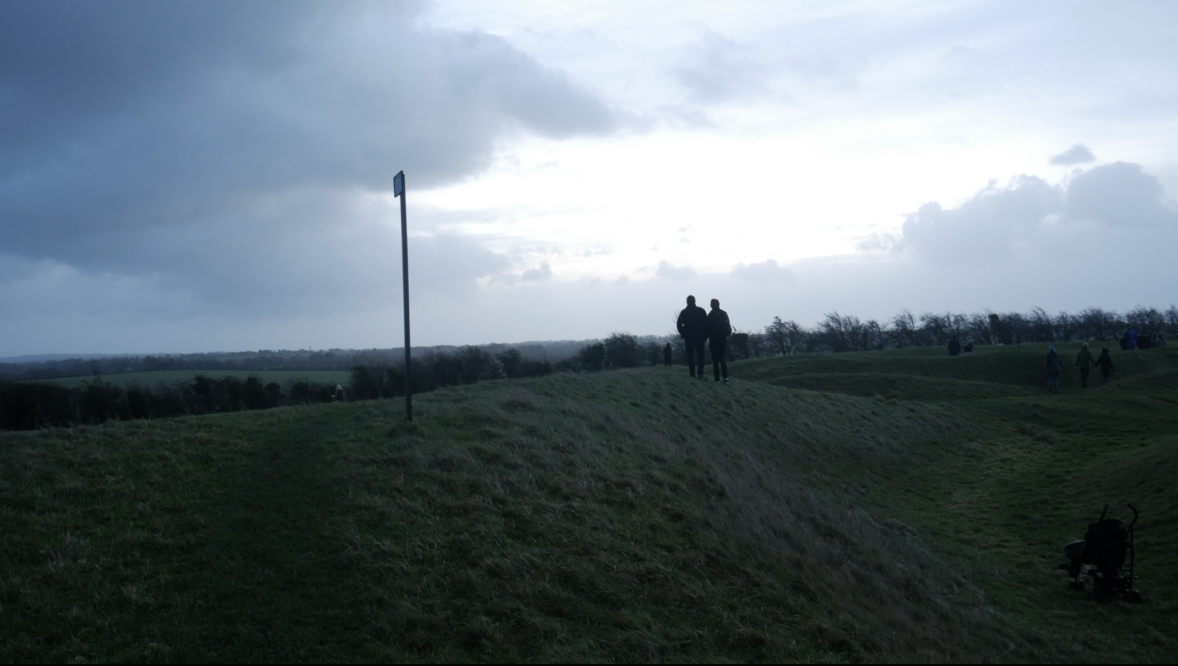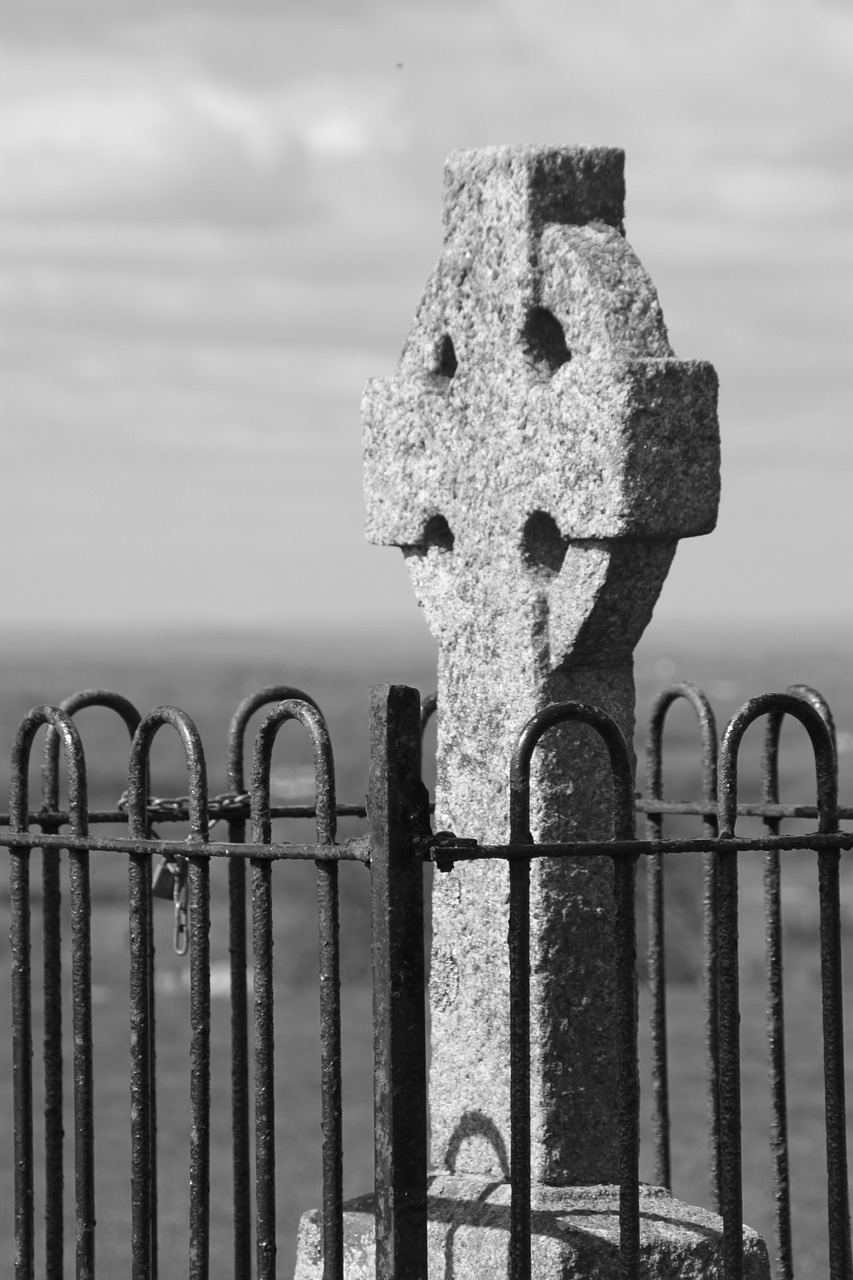The Winter Solstice

Caroline Guerin McGrath
From the Tara Foundation Winter magazine of 2007/2008.
At 6:12 UT, 22 December 2007, the sun shone directly over the tropic of Capricorn, marking the shortest day of the year in the Northern hemisphere. This event was known as winter solstice, a festival which has inspired significant rituals and celebrations all over the world. This date also coincided with the fortieth anniversary of the discovery of the roofbox at the entrance of Newgrange (Ir. Dún Fhearghusa) by Prof. Michael J. O'Kelly. On winter solstice 1967, for the first time in millenia, the sun illuminated the passageway and chamber, which had been constructed in alignment with the sunrise. The tomb was built around 3300-2900 BC [1], with a commanding view of the surrounding landscape. It was coated with white quartz and elaborately decorated with carved spirals, lozanges and zig-zags.
The site was clearly of preeminent ritual value in ancient Ireland, but
its full significance has not fully been uncovered. The symbolism of a
shaft of sunlight entering the chamber was surely related to
regeneration and fertility. Light in winter was minimal, and solstice
heralded a lenthening of days and the oncoming spring. Moreover, winter
was a time of privation, and the return of sunshine to this ritually
important site must have been of great psychological importance. Nothing
is known about the astronomical methods used in the construction of
this tomb. Scholars such as Edwin Krupp, director of the Griffith
Observatory in Los Angeles, California, have posited that the ancient
Irish possessed a sophisticated knowledge of the skies. The knowledge
required to make precise calculations in order to build a roofbox which
would allow the passageway to be illuminated once a year must have been
immense.
Many ancient sites in the Boyne valley and beyond have clear views of
the sunrise on Winter Solstice, such as the Hill of Tara. Their position
in relation to such astronomical events suggests a cultually and
intellectually rich society. They may originally have comprised an
astronomical clock or calendar. The entrance to Newgrange points towards
another passage tomb at Fourknocks, which in turn points towards the
elevation of the star Deneb in the constellation Cygnus. This star marks
the position of the sun on the night before Winter Solstice. The mound
is part of a complex of sites in the area and is richly decorated with
spirals and circles.
The mound at Dowth (Ir. Dubhadh), unlike its counterpart at Newgrange,
has two known passageways. However, the south passage marks the Winter
Solstice in a reverse manner to the more famous tumulus. Each year at
this festival, the sunset illuminates the southern chamber. Like
Newgrange, there is elaborate decoration to be found on the stones in
Dowth's southern passage. Stones covered in spirals, zig-zags, circles
and lozenges are illuminated by the setting sun at Winter Solstice. It
has been suggested that these markings represent astronomical imagery,
such as the sun, which must have been a significant part of ancient
ritual life.

Elsewhere, in the village of Baltray, near the mouth of the Boyne, there are two standing stones (of three original) at a site known in Irish mythology, hagiography and Dindshenchus as Inbher Colptha [2]. They are aligned and face the easterly islands of Rockabill, so that on Winter Solstice, the sun rises over the islands. They are believed to date from c. 2000 BC. [3] This alignment was calculated in 1999 by local journalist Anthony Murphy, in conjunction with artist Richard Moore and photographer Michael Byrne.
At Arda Mór (Ardamore), near Dingle, Co. Kerry there is a site called
Log na nGallán where there are four stones. On Winter Solstice, these
stones are aligned with the setting sun. Like many Irish standing
stones, they are covered with carvings, which were undoubtedly linked
with their complex ritual function. The stone circle at Drombeg (An Drom
Beag) near Skibbereen in Cork consists of 13 (of 17 original) sandstone
pillars and measures 30 feet in diameter. The midpoint of the circle
faces the sunrise on Winter Solstice. The sun shines through a notch in
the distant hills and is oriented by a pair of recumbent stones outside
the circle.
This year's winter solstice sunrise illuminated a changed and threatened
landscape. The recent handover of Lismullen Henge to the private
construction company which is contracted to build the M3 motorway
heralds the destruction of part of a complex and interconnected
landscape. This landscape has not been inadequately excavated and its
archaeological value is ill-understood. This is part of a government
policy which endangers all of these sites of enormous historic and
cultural value.
[1] E. Grogan, "Prehistoric and Early Historic Cultural Change at Brugh na Bóinne", Proceedings of the Royal Irish Academy 91C, 1991, pp. 126-132
[2] J. H. Todd (ed. and tr.), Leabhar Breathnach annso sis: The Irish version of the Historia Britonum of Nennius, Dublin: Irish Archaeological Society, 1848, 247, § 49
[3] Victor M. Buckley and P. David Sweetman, Archaeological Survey of Co. Louth, Dublin: Government Publications, 1991
